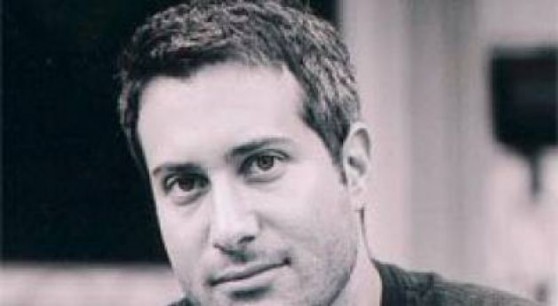Half a Life: When too much is enough
It’s written too well, Half a Life. And that’s understandable. Darin Strauss’s “memoir” — a poor fit, that word, but the closest available — concerns the death of a girl half (his) lifetime ago; Celine is her name, and she swerved out in front of Strauss’s car on her bike. Strauss, 18 at the time, knew her only a little at school, but would come to know the experience of carrying her with him as nobody else could, and Half a Life is among other things an attempt to explain what this is like.
It is, of course, not “like” anything, and it is not a narrative job for amateurs; the delicacy required is akin to that needed for dismantling a bomb. Strauss, the survivor of the calamity, must then try to construct an arc out of it despite its essential and wounding randomness (authorities immediately found him not at fault). He must stay up on a tightrope between self-absorption and self-effacement, relatability and flippancy, just in his portrayal of himself — while at the same time honoring a ghost he surely wishes would leave him be. It’s fine, careful work, and Strauss is bringing every newton of his formidable phrasing force to bear on every sentence. Again, understandable, and the book contains more than few “…that!” gems, like Strauss remarking that “a tragedy turns a life into an endless publicity tour, a string of appearances where you actually think in words like ‘tragedy'” (156). It’s not that the man can’t write, or doesn’t see what the job is.
But perhaps the man should just talk instead. Strauss’s metaphor for the process of blame is sharply observed, recognizable truth:
I think we all build superstructures in our heads, catwalks and trestles that lead us from the acceptance of our own responsibility to the cool mechanics of the factory, where things are an interlocking mess, where everybody’s pretty much unaccountable. To be alive is to find away to blame someone else. (110)
But the last sentence is both perfect and too much. Later, talking about a prep room he’s in prior to surgery, he describes the others present: “The other patients showed the frog spots and lack of vehemence that men often have in the last panels of their lives.” Another on-point description, but it has the ring of having been saved for a while, and I wondered what it was doing there. Strauss returns throughout the book to the idea that he’s expected — by Celine’s parents; by himself; by a universe in the ongoing process of balancing itself — to live his life for Celine as well, to give her her shot via his worthiness. The unrelenting lyricism may stem from that. See how he’s held up his end, how gently he’s carried his dead?
The writing isn’t self-regarding, mind you. It’s seeking something, but admiration for itself is not that thing. And it’s gorgeous craft, but often, it’s like looking at jewelry in a museum. Nothing throws sparkles like a waved hand. A sapphire is still gorgeous under glass, of course: “Regret doesn’t budge things; it seems crazy that the force of all that human want can’t amend a moment, can’t even stir a pebble.” Overpolished, but still exactly right. But Strauss is at his most affecting when he’s plain: “And if you’re lucky you end up walking again through a life where you’re never called on to do too much noticing.”
I can’t claim to know what Half a Life is “trying to do,” and I don’t see how else it could have been done in any case, whether Strauss is telling this story to us or to himself. It’s not really for me to tell the author of Chang and Eng, “I know you’ve lived in this since the ’80s, but maybe do a shot of Jack and use smaller words?”, and the chapter breaks landed a little film-school, but I don’t see an alternative there, either. (In one hardcover edition, the book has half a jacket. It’s more of a belt. The choice comes right up to the edge of jokey, you could say, but it hit me pretty good.) It’s not a book I can put on the good/bad axis, given the subject. I can only tell you whether or not you should bother reading it; I would recommend it. The more I think about what might not succeed, the distance, the control, the more I find to think about: the processes, emotional and literary, at work here; how Didion’s recent work might inform it (for readers, that is — Half a Life came out six months before Blue Nights). It’s a quick read with a slow burn.
…No surprise that “too much noticing” line resonated with me, I suppose. So be it. Give Half a Life a read; the fact that it doesn’t quite work…works.
Tags: books Darin Strauss Joan Didion






I heard this story a while back on “This American Life.” I’m guessing he fills it out some more.
This story intrigued me when I heard about it a while back, via some articles by Strauss and others. I’ve wanted to know more about both him and her family, who seemed to be having a hard time accepting not only what happened but also that he was not at fault. I don’t normally read non-fiction, but your review makes me think this book is worth it.